When thinking of Morocco, its colourful architecture and aromatic spice souks always spring to my mind. Saint Laurent – a talented designer – found his own creative inspiration for his fashion masterpieces in colourful Morocco. This vibrant country pulses with intense vitality and culture, making it an endless inspiration for those who are passionate about creativity and adventure.
[rpi]MOROCCO – AN INSPIRATIONAL COUNTRY
Morocco conjures a surprisingly tuneful picture and makes my heart flutter with excitement. Fruitful orange trees lining the streets and glowing in the brilliant sunshine, they look like baubles hung on Christmas trees. The Eastern-inspired gardens boast a sun-dappled view with towering cacti interspersed with citrus and palm trees. Marvellous Morocco fascinates travellers with its gorgeous landscapes and laid-back ambience.
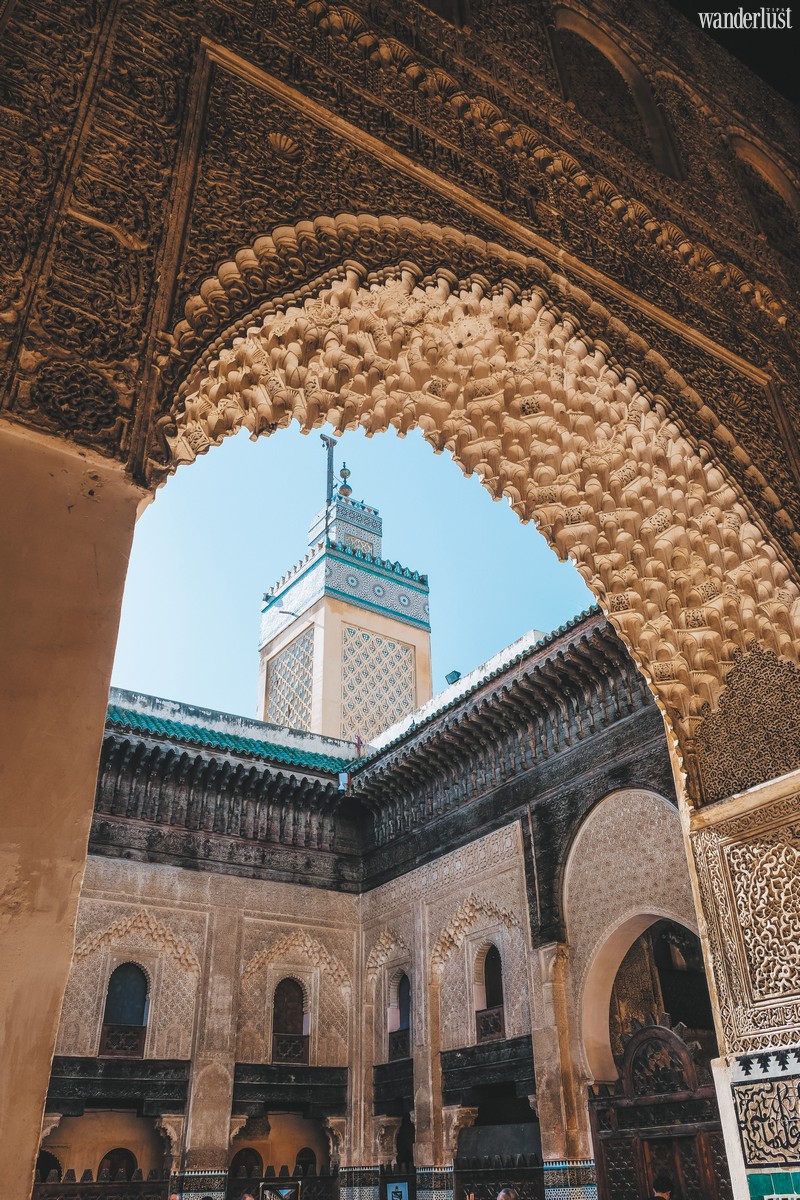
Morocco is also home to plenty of precious treasures. Casablanca is Morocco’s largest city – possesses the world’s seventh-largest Hassan II Mosque with the highest minaret at 210m. The sacred mosque is an impressive example of Moroccan architecture that stands on a promontory looking out over the Atlantic Ocean. According to King Hassan II, God’s throne must be built on the water. With a potential capacity of 25.000 worshippers inside the mosque and a large space for another 80,000 in its grounds, this magnificent spiritual landmark truly made my heart skip a beat.
After a few hectic days getting lost in Casablanca, I visited the charming, blue-tinged city of Chefchaouen – a hidden gem in Morocco. The tradition of painting the buildings stems from the Jewish community. It is believed that the breathtaking shades of blue remind them of God’s power. Local residents have regularly repainted their walls, stairs and alleyways. The entire city is vividly bathed in shades of cerulean. Taking a stroll around the cobalt-hued city, you will get an awe-inspiring view of its distinctive architecture and authentic artistic style.
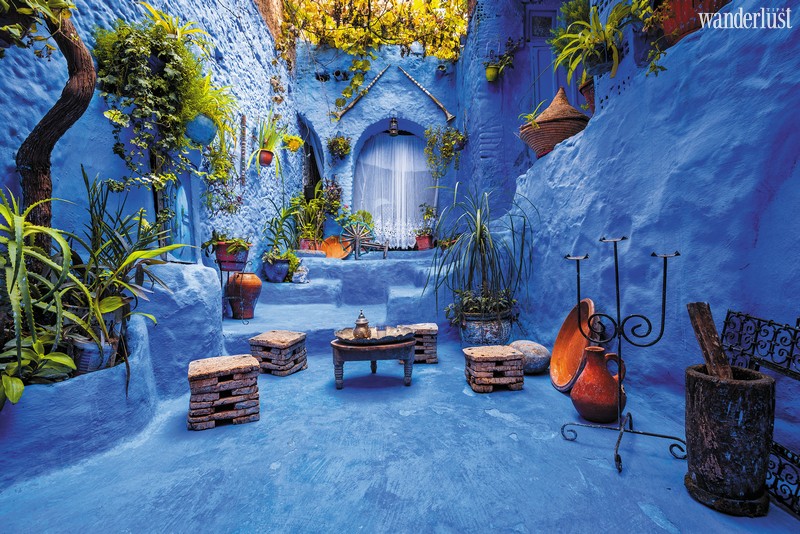
Fes, the second-largest city in Morocco, still has the air of a well-preserved medieval capital, bustling souks and stunning medinas. Fes is famous for its Bab Boujloud, also known as “The Blue Gate of Fes”. The gate is painted with elegant cobalt blue designs on one side while its reverse is green, forming a doorway between two equally colourful and dynamic worlds of Fès el-Jedid and Fès el-Bali. Additionally, Fes is home to an incredible maze of medinas that you can wander through and marvel at the priceless architectural and cultural treasures.
The last destination on my Moroccan travel itinerary is Marrakesh – Morocco’s fourth-largest city. This intoxicating city is known for its 18 traditional souks with a vast array of colourful and eye-catching wares. No Marrakesh trip would be complete without sightseeing, watching the never-ending movement of people and trying street food in hidden corners of the maze-like souks. For instance, try fragrant burgers, stir-fried meat sandwiches, refreshing juices and fresh cactus fruits peeled by enthusiastic vendors. The chaos and traders hawking seemingly add a sense of intense vitality to the fascinating city.
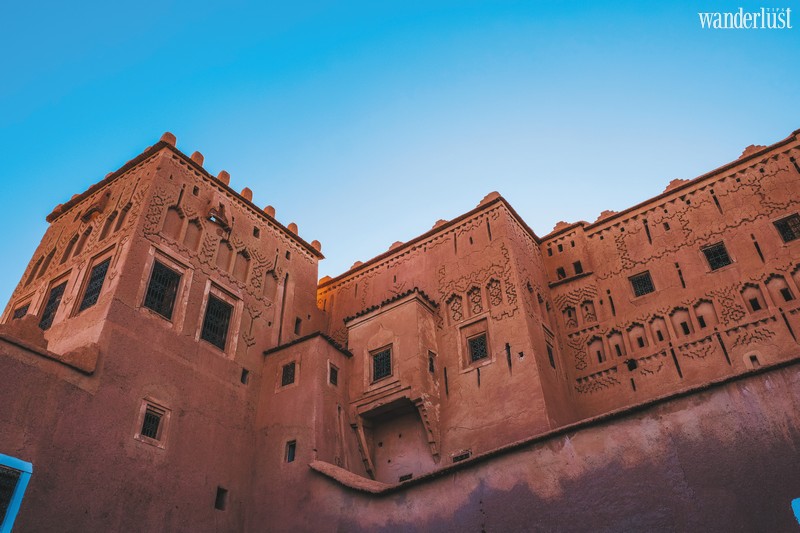
If you travel to Morocco, spending a night in a camp under the sparkling stars is an absolute must when exploring the Sahara Desert. It is worth experiencing the harsh temperatures and embracing your sense of adventure. The ups and downs of riding a camel whilst watching the sunrise and sunset is truly an unforgettable experience. As the sun lit up or went down over the creamy dunes, I felt as if I was basked in a fresh ambience and endless freedom.
ART ON EVERY CORNER
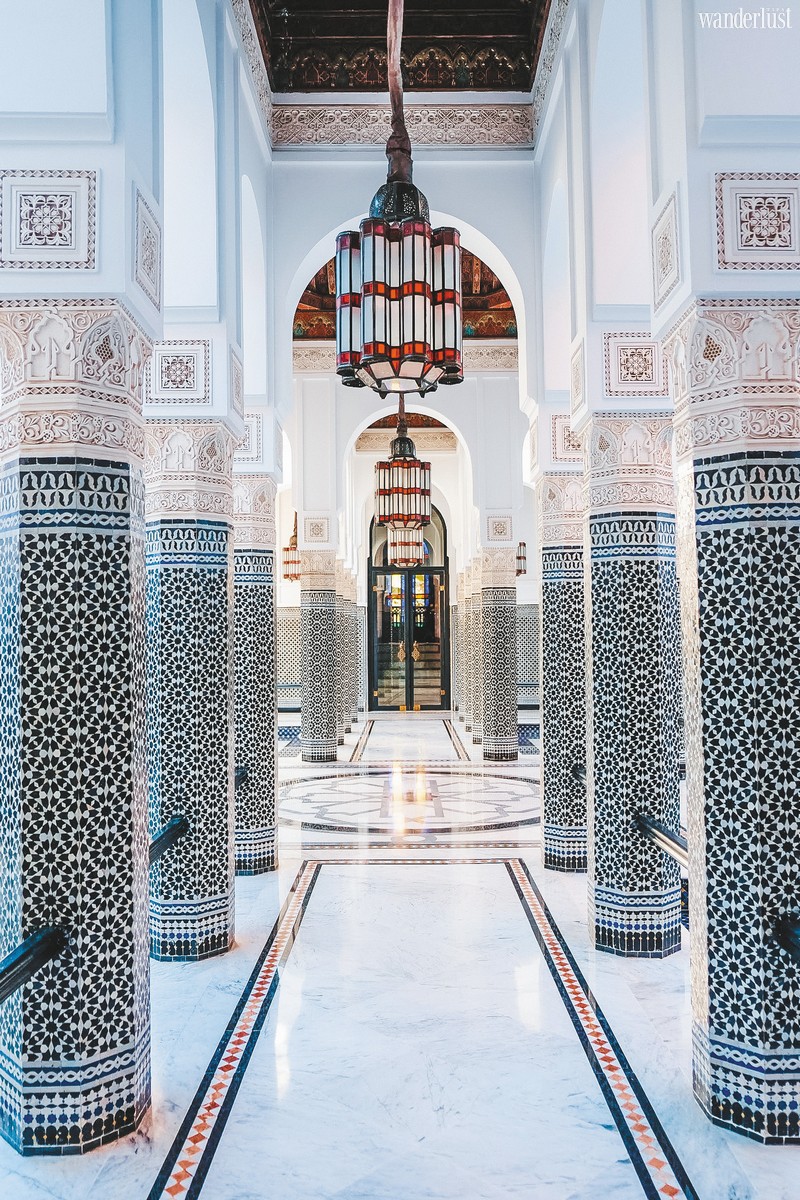
When it comes to ceramics, Moroccan mosaic architecture always springs to mind. The intricate zellige walls (geometric mosaic tilework) are an impressive aesthetic highlight of Moroccan architecture, a quintessential cultural heritage and a rich blend of African, European and Arab civilisation. Although the mosaic art was initiated by ancient Greeks thousands of years ago, Morocco made an awe-inspiring twist of art and architecture. In the past, only riads – Moroccan wealthy mansions or palaces – were designed and decorated with the mosaic technique, but it has gradually become more popular and can be found everywhere such as on the walls, dining tables, fountains, pillars and ceilings.
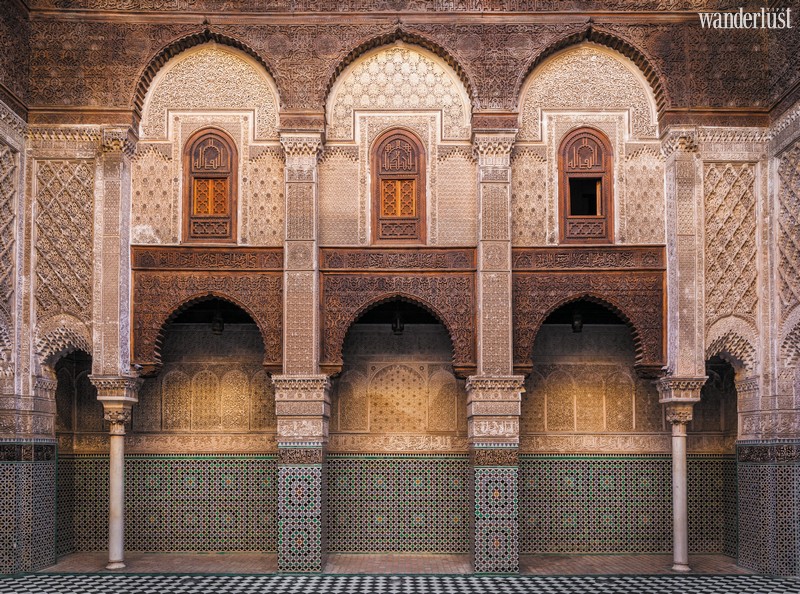
This is a respectful and honourable reminder for the Muslim community of their Almighty God. The elaborate mosaic artworks and designs are a shining example of Moroccan craftsmanship. A steady and careful touch by expert craftsmen can create masterpieces of ornamental Arabic calligraphy. Therefore, if you are an architecture aficionado and are passionate about exploring this artistic country, then staying in one of the typical riads in Morocco will definitely be an exhilarating and unforgettable experience.
Aside from such excellent mosaic artworks, Morocco is well-known for the striking variety and quality of its ceramic crafts. An amazing diversity of home goods and housewares, such as vases, jars, cans, teapots and trays are completely covered with pure silver and then styled into a specific shape. Once you see the delicate ceramic products, you cannot help but be in awe of the splendour and intricacy of Moroccan design.
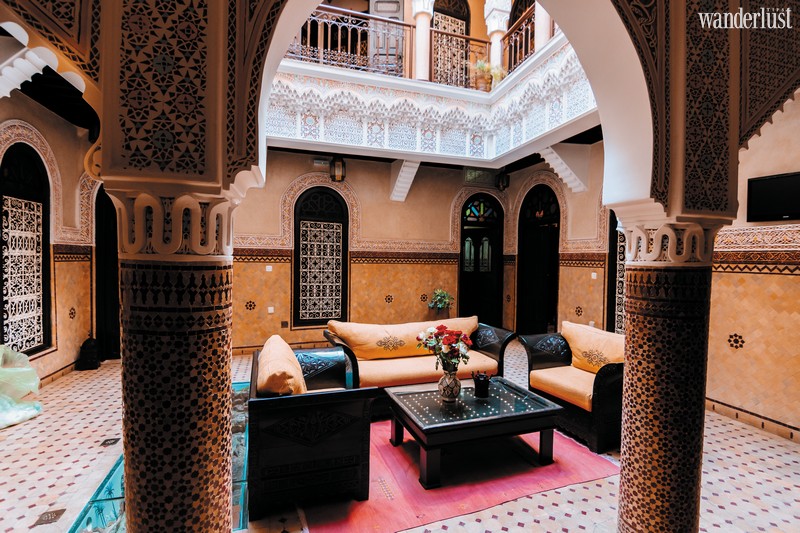
Additionally, Morocco is the perfect destination for leather addicts due to its high-quality leather products and traditional tanning techniques. In French, “Maroquin” means Moroccan leather and is used in the word “Maroquinerie” meaning leather goods. Aside from a plethora of leather products displayed in the labyrinth of alleyways, eclectic souks and spotlight-grabbing medinas, you will be surprised and interested in wandering through the ancient Moroccan leather tanneries, which have been preserved for centuries.
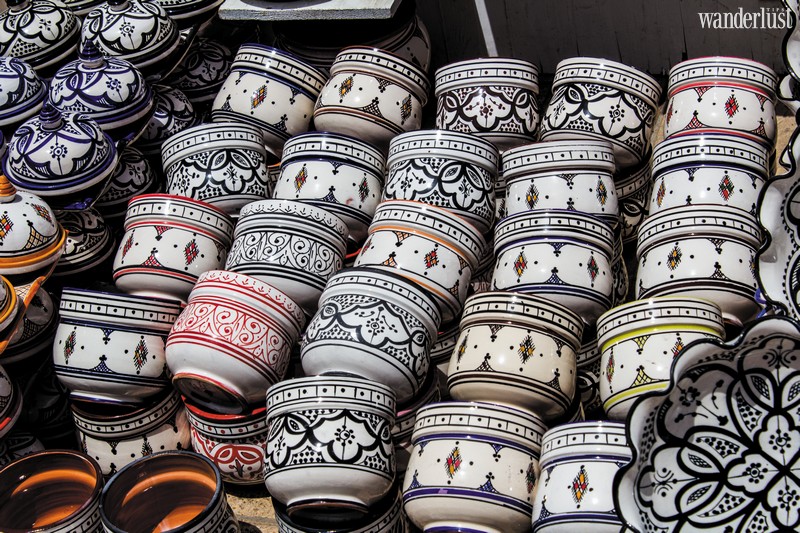
The dyeing pits are located side by side and filled with a vast range of natural vegetable dyes and various liquids, such as poppy flowers for red, indigo for blue, mimosa and saffron for yellow. Particularly, saffron is costly, so this dye is applied sparingly to individual skins, which are then laid out to dry under the sun instead of soaking in a stone vessel. Moroccans have developed an excellent technique for dyeing, so their leather products are extremely impressive. For some types of dye, the water-mixed colour is completely different from its original colour. It is said that Morocco is truly a magical country bursting with colour, creativity and inspiration.
MOROCCAN CUISINE
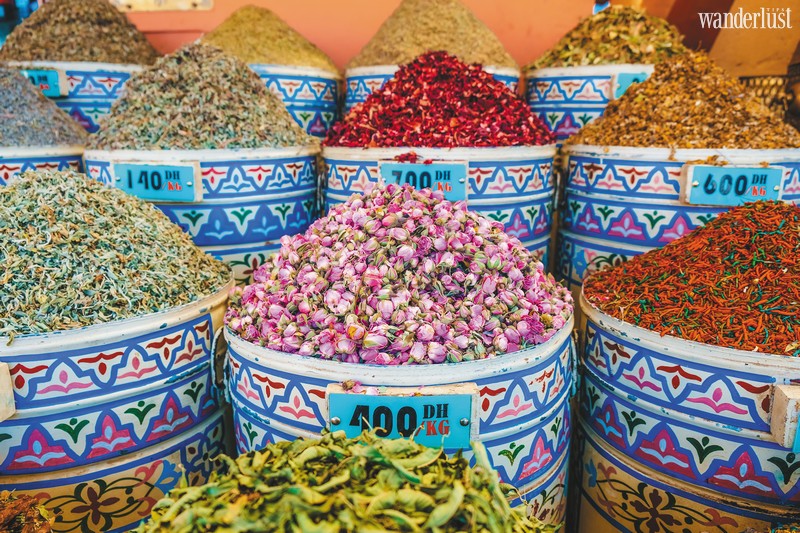
There is a saying that “Fine words butter no parsnips”. If you are travelling to Morocco, you will be in for a delicious gastronomical treat with an amazing variety of gourmet dishes and fresh local ingredients. Tagine is a fascinating dish that can immediately tantalise your tastebuds. Tagine is a famous Moroccan stew slowly cooked in ceramic pots that look like a bell placed on a circular plate. Moroccan Tagine is an excellent mélange of meat (can be beef, chicken, tuna, sardines or lamb) and other healthy vegetables such as potatoes, carrots, sweet peppers and chillies to add more colours and complementary flavours.
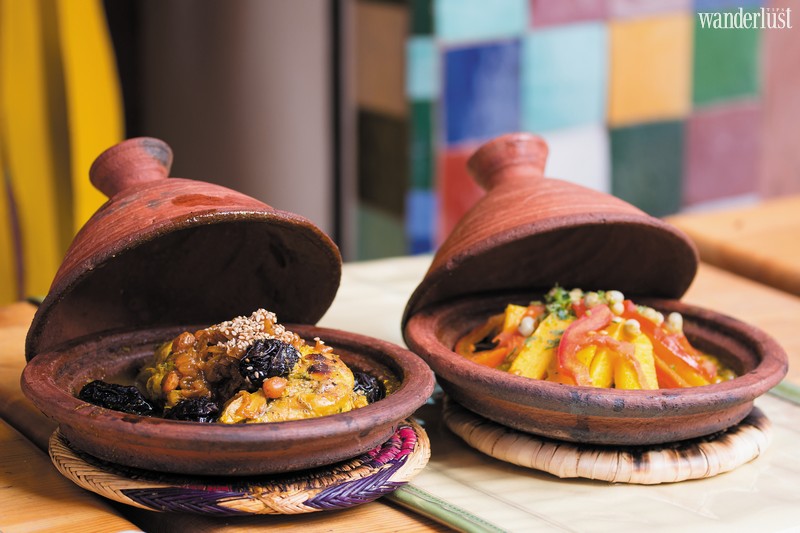
Moroccan cuisine bears a very distinctive identity that is a rich blend of Andalusian (Spain) and Berber culture. (The Berbers are a major ethnic group of North African regions, stretching from the Atlantic Ocean to the Mediterranean Sea). Beautifully and deliciously presented, Tagine is a significant culinary and cultural symbol in Morocco. Take a stroll around the traditional souks, where you can easily find plenty of clay or ceramic cooking vessels and trays. You can also buy smaller models for decoration or souvenirs. Thanks to the unique patterns and designs on traditional cookware, it makes an impressive twist for collectors.
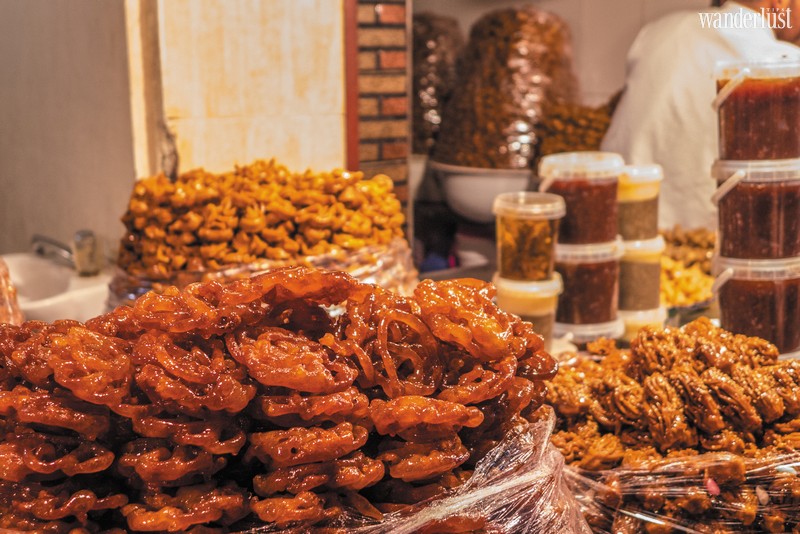
Morocco is a gem in Northern Africa, making it a favourable tourist destination for travel enthusiasts. Morocco has people falling head over heels in love with its colourful beauty. Many travellers find Morocco fascinating and are keen to return to this magical country to once again experience and immerse themselves in its cacophony of hectic sounds and vibrant sights.
W.TIPS TRAVEL TO MOROCCO
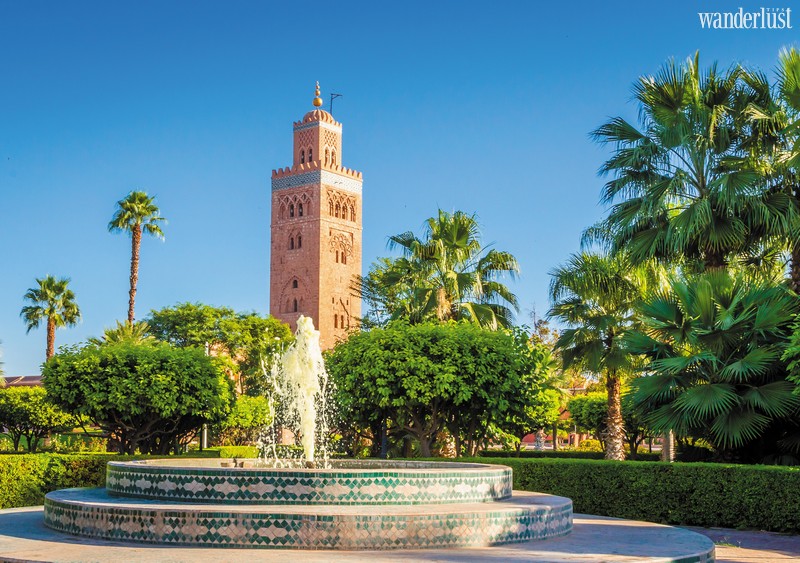
VISA
If you are Vietnamese, you must apply for a visa to be able to travel to Morocco.
CURRENCY
In Morocco, the official currency is the Moroccan Dirham. A dirham is currently worth about VND2,350. Euros are accepted in some places.
CLIMATE
The Moroccan climate varies greatly throughout the day from the city to city, so you should pack outer-wears that can be worn alone or layered for cooler weather.
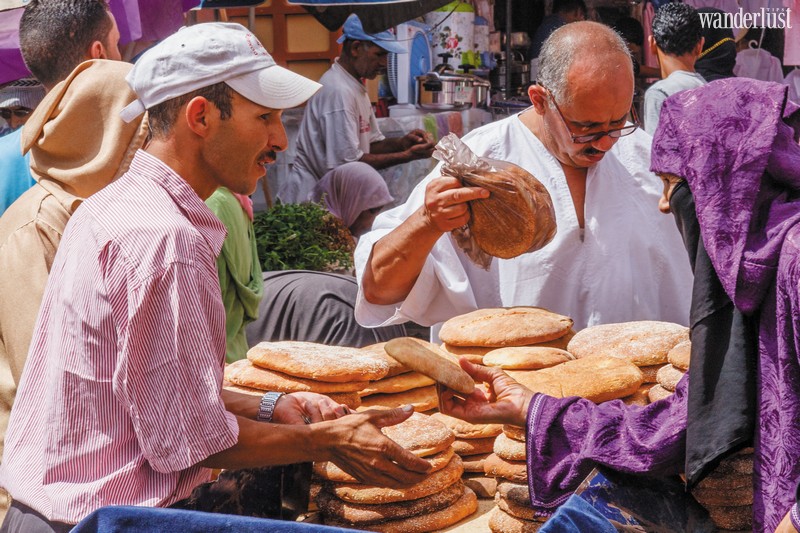
SHOPPING
When shopping at the souks or shops in Morocco, you can definitely find a bargain. You will be spoilt for choice with a huge number of spices, tea, pottery, mosaic or leather products, Argan oil and carpets.
OTHER NOTES
- Do not take photos of people without their permission.
- If you are a female traveller in Morocco, a shawl to cover your head is definitely necessary for a safe and comfortable journey.
Alex Tu | Wanderlust Tips


[…] people have fallen head over heels with its mysterious yet fantastic beauty, ancient and modern architecture, as well as legendary history. As one of the first European countries to reopen after the […]
[…] and unique mountain lies next to the famous Lijiang River that is considered a significant symbol of Guilin tourism in China. The Elephant Trunk Hill looks like a huge elephant stretching its trunk […]
[…] become a famous Korean sweetened dish. There is an amazing variety of ice shavings with fantastic flavours and Instagram-worthy presentation. Interestingly, there is no common recipe for this refreshing […]